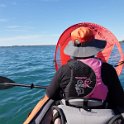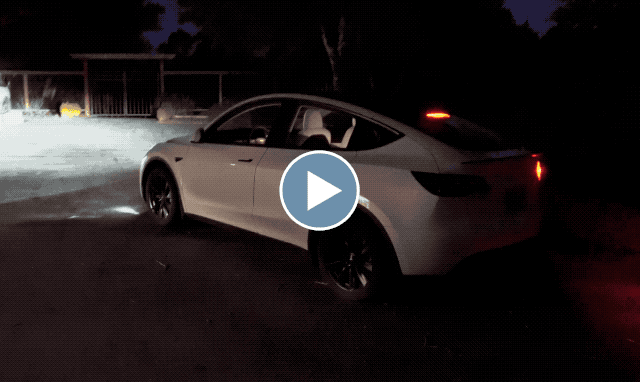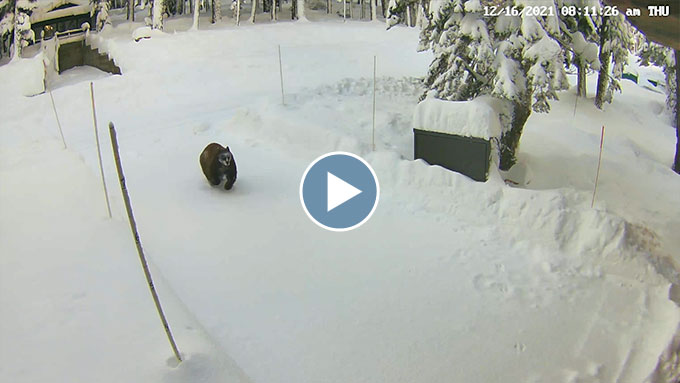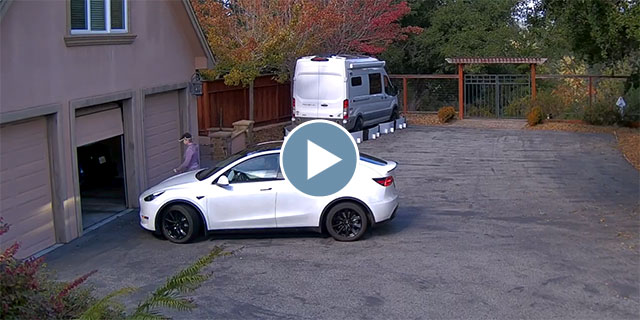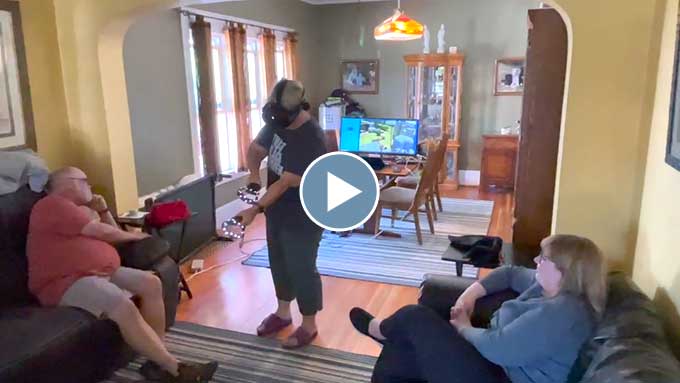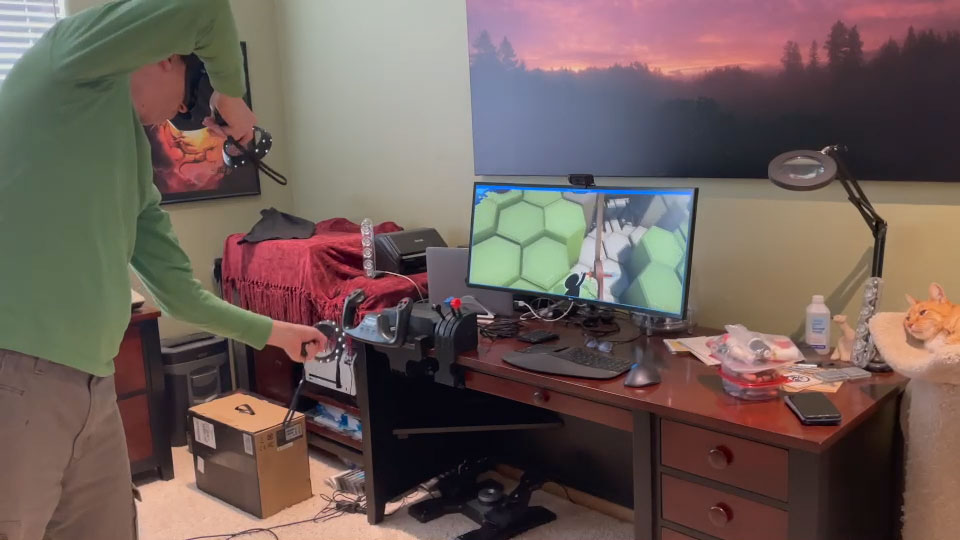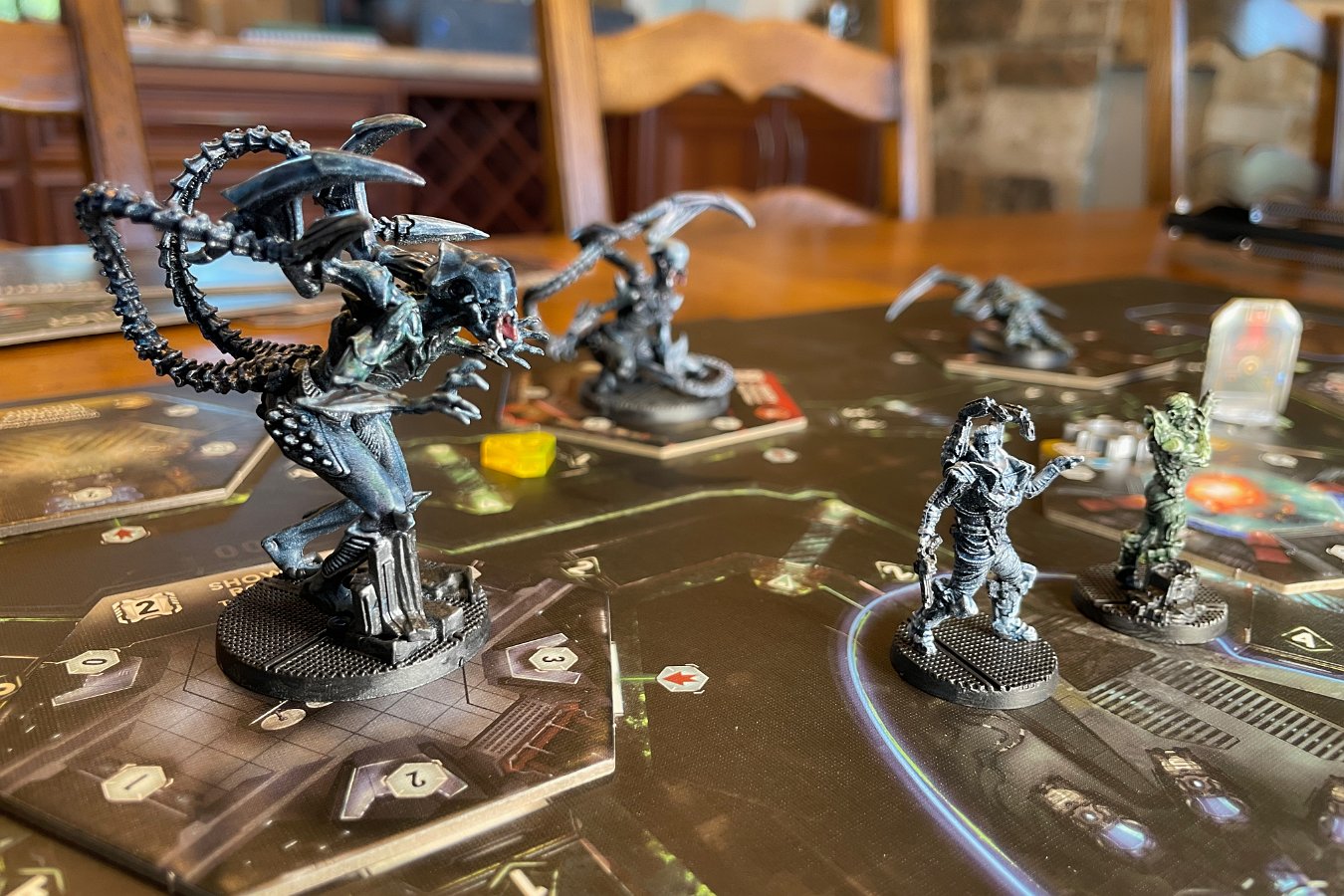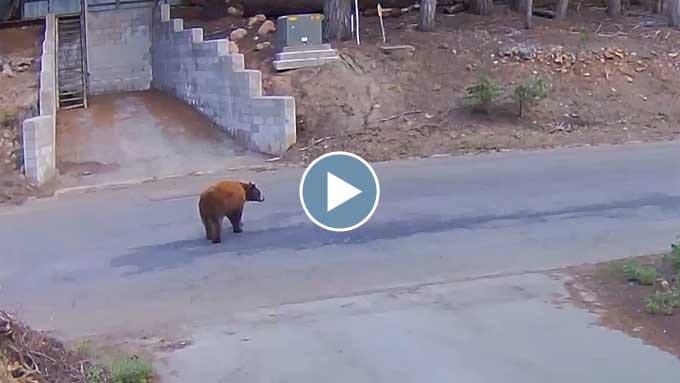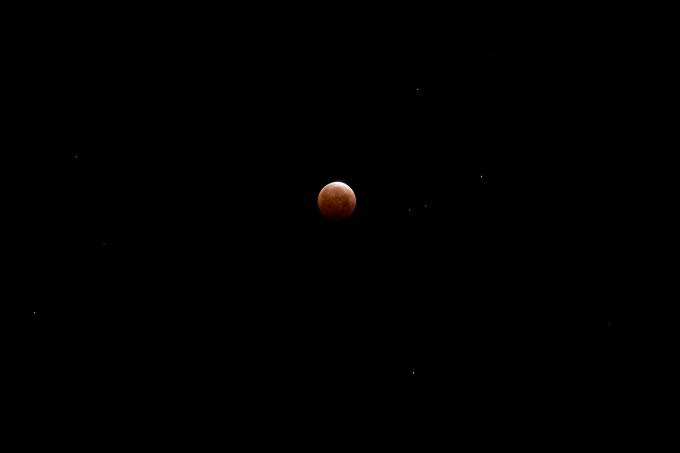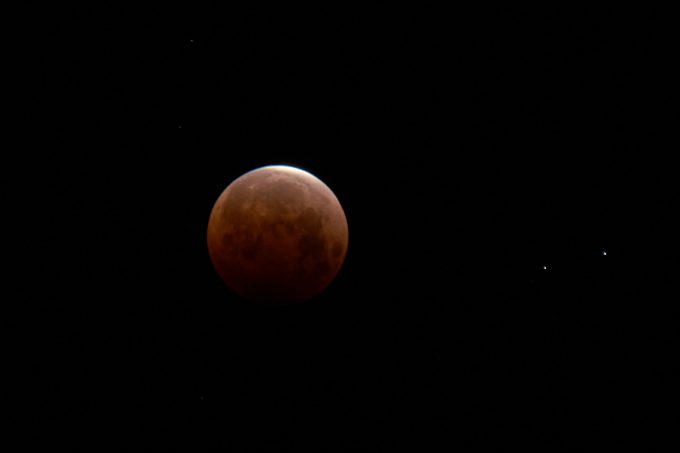While Darlene was out here visiting for a few days from Wisconsin, ;-) we took the kayak out for a late morning paddle in Elkhorn Slough. And of course we saw the usual array of sea lions, sea otters, pelicans, etc:
Category: Home
Merry Christmas from Tesla
I just received a software update for my Tesla Model Y today – just in time for Christmas. Among many other changes and additions, it now includes the light show for all of their current models. As a friend noted, it appears to be possessed by a ghost of Christmas:
Apparently it’s now possible for owners to create and load new light show arrangements. The provided one is set to the tune of Carol of the Bells.
Update (12/27): As expected, folks are already making tons of new song and light show arrangements, like Eye of the Tiger, Star Wars Imperial March, Darude’s Sandstorm, Daft Punk “The Grid” from Tron: Legacy, etc. Here’s a repository coming together to find and download them.
If you’re interested in buying a Tesla, using someone’s referral link will give you a discount (the amount varies over the years) and grants redeemable credits to the person who referred you. Here’s my Tesla referral link.
High Speed Bear Crossing
The noise you hear is a snow plow operating nearby, probably clearing the road intersection off-camera to the left. An hour later, apparently while I was editing the original video clip of his dash across the road, the bear came back – with the snow plow still operating nearby — and he tried crossing again several times. (I’ve now combined all the clips together.)
Gaming (and Costumes)
More pictures from our gaming sessions, including in costume for Halloween and for our ongoing King’s Dilemma council meetings:
Some of the many titles we’ve played recently: Cascadia, Burgle Bros (1 and 2), Chinatown, Pan Am, Cosmic Encounter, The Bloody Inn, Wiz-War, Mountain Goats, Plague Inc., The Search for Planet X, Maglev Metro, Near and Far, Gùgōng, Decyrpto, King’s Dilemma, Pandemic Legacy: Season 0, Bargain Quest, Nemesis, Obsession, Inis, Deception: Murder in Hong Kong, Barrage, Evolution: Climate and Flamme Rouge.
Update (11/29/2021): Added pictures from some more gaming sessions in November: Villainous, Unicorn Fever and Chinatown. I forgot to take pictures during our very long but surprisingly truly funny game of Forgotten Waters. D’oh!
Update (12/17/2021): Clay joined us in December on a visit: Die of the Dead, Power Grid, Flamme Rouge and Settlers of Catan — it was Darlene and Adriana’s first time to play Catan! We also got together later in the month at Nacho’s for Bargain Quest and For-Ex.
Darlene Forgets Something
More VR Demos
More demos of VR for friends, this time with Dave and Kathie, separately with Troy and (updated in December 2021) with Clay:
See also past VR demos with Martha and Dave and with Glenn, Michele and Seaerra:
and my original demo of VR experiences with me and Darlene:
Painting my Nemesis Figures
I decided to try a relatively quick and simple wash painting of the miniatures from my Nemesis board game, focusing on giving the creatures (or “intruders”) a nice scary look. They came out great!
It took just a few steps but still most of a day. I coated the originally gray plastic figures with a black spray-on primer (Rust-oleum Flat Black) and then, after that dried, I sprayed white primer from above (Rust-oleum Flat White) to create a sort of highlight/shadow effect over which to apply a wash. (A wash is a very diluted mix of paint that you brush all over a figure – it tends to collect on edges and pool in crevices bringing out detail and definition, depending on how you brush it.)
I used three color washes from this Citadel Shade Paint Set. The primary shade was blue (Drakenhof Nightshade) and then I blended a bit of red and green washes here and there (Carroburg Crimson and Biel-tan Green) to give it a more interesting look. I did a little bit of detail painting in the fleshy parts around the creatures’ open mouths and then painted in the floors and bits of equipment on some of the stands. To keep the project short and simple, I just applied several coats of different solid color washes to each hero character corresponding to the player colors rather than painting all the little details realistically.
Last step was a spray-on, matte clear coat (Krylon Matte Finish) to protect the painted figures from handling while playing the game.
Another VR Demo
While visiting my brother in Portland, I was able to give him, Michele and Seaerra the chance to try out just a little bit of the virtual reality experiences I’ve been going on and on about excitedly for months:
If you’re interested, I write about what it’s like to experience VR in this post – plus I have a longer demo video. And for more about Microsoft’s updated Flight Simulator, see Flying All Over the Planet.
Gaming In Person Again
With everyone fully vaccinated, starting in mid-June we were able to get together for in-person board gaming again – and so much more fun than the entirely virtual meetups during the past year.
Some of the titles we’ve been playing recently: The Crew, Now Boarding, Near and Far, Burgle Bros., Sagrada, Azul, Nidavellir, Viticulture and Viticulture: Tuscany, Mechs vs. Minions, Covert, Cartographers, Acquire, Cloudage, Captain Sonar, Railroad Ink, Pret-a-Porter, Bang!, Smartphone Inc., Crazy Karts, Kanban EV, Sidereal Confluence, Between Two Castles, Vindication and Brass: Birmingham.
Update: We got together again on the last day of the month for Shikoku, Steampunk Rally, Cosmic Encounter, Feierabend, Betrayal at House on the Hill, Master Word and Villagers.
More Unexpected Visitors
Blood Moon
Virtual Reality Is…
Virtual reality is… freakin’ amazing. (At least with the new, very high resolution HP Reverb G2… see my hardware details below.)
Let me try some words first…
It’s a truly astounding and engrossing experience – an incredible, brain-fooling trick: you put on the headset and immediately you feel like you are physically somewhere else. Rationally you know that you’re still sitting or standing in your room at home, but as you look around and up and down and see and hear this entirely different environment, rendered perfectly in sync with your head movements, it’s utterly convincing that you’re somewhere else. Maybe you’re standing on top of Mt. Everest or hanging in space over the Earth. It’s not at all like looking at a screen, or even a 3D movie. It’s like being somewhere else.
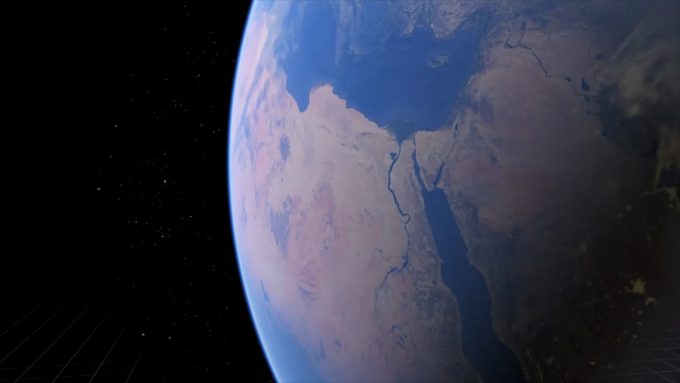
Yes, you’re wearing this contraption on your head. Yes, you know you can just remove the headset and see again the room you’re really in. And yet, part of your brain is fooled. You hold up your hands in front of your face and you see a virtual set of hands and they move and turn in sync with your physical hands. Just standing and turning around makes you feel like you’re there but then you take some steps, some actual physical steps in the real world – and you find yourself moving in this virtual world. It suddenly becomes all the more convincing and all the more of your brain is fooled.
You crouch down and look around and your perspective changes to match. You reach down and “pick up” an object off the virtual floor. You can’t feel it but you can turn it over in your hands, and can set it on a table or throw it across the virtual space with a simple, natural motion. You step to the edge of a balcony and look over the side and feel the threat of vertigo. You turn away and approach a door, reaching out for the handle and physically pull the door open, looking into the next room. It’s dark as you step inside, so you take out your flashlight and shine it left and right into the corners of the room, trying not to be caught by surprise.
You see a zombie wake and turn towards you, moaning and shambling towards you. He’s just a dozen virtual feet away as you grab your pistol and raise it to fire – discovering you’re out of ammo. Unlike any game played on a flat screen, you feel like you’re actually in the same space with this menace bearing down on you. You have to resist the instinct to physically back away – or to turn and run in panic, yanking out the cord between your headset and computer. Instead you hold your ground, reminding yourself that this creature so clearly coming at you isn’t real. You eject the empty magazine and physically reach over your shoulder with your other hand to grab a new clip out of your virtual backpack, slip it into the gun, pull back on the slide – not button presses mind you, but physical hand gestures – and then quickly aim (actually raising your arm, no thumbstick or mouse movement) and let off several shots at the zombie to fell it. And yeah, don’t be surprised to feel an elevated pulse or quickened breath after dealing with an intense scene. The immersion is just crazy amazing. And it’s really easy to forget yourself and try to lean on a bannister or a table and get a sudden rude reminder that there’s nothing really there to support you.
Of all your senses, most notably touch is missing. You can’t feel the wall or door that blocks your way, objects that you pick up have no weight to them and what you always feel underfoot is the familiar floor of your home. Each of these do break the illusion, remind you that you’re in a simulation. But just sight, sound and natural physical gestures go a long ways to providing an amazing array of virtual experiences: from defending a castle against animated invaders by shooting arrows with a virtual bow to using a giant slingshot to aim and launch talking cannonballs for maximum destruction in a giant warehouse in Valve’s The Lab, sitting in the cockpit of various airplanes, flying over detailed renderings of any part of the entire world and through live simulated weather in Microsoft’s new Flight Simulator, exploring the frightening dystopian world of Half-Life: Alyx, fighting off walking zombies and leaping headcrabs, or simply walking around the Mos Eisley Cantina from Star Wars or the streets and shops of Stormwind from World of Warcraft.
Okay, how about some video…
I’ve been blown away by what it’s like to experience virtual reality right now and I’ve been itching to share the experience with friends over the past few months, but of course we can’t get together with the pandemic still going strong. So I’ve put together a video to share some of the experiences – even though a video can’t come anywhere close to conveying what it’s like to actually be immersed in virtual reality. It’s the same difference as actually physically being somewhere versus watching a video recording of someone else being there, but here goes anyway:
A collection of VR experiences
What I demonstrate in that video is the default Steam VR home environment, Google Earth VR, MS Flight Simulator, Valve’s The Lab, Half Life: Alyx, I Expect You to Die, Superhot VR, a World of Warcraft environment and a bunch of Steam VR environments: Enterprise bridge, Hobbit house, Mos Eisley Cantina, Sno Champ and a robot boxing ring.
There’s still so much more to try though: Asseto Corsa car racing sim, Star Trek Bridge Crew co-op simulation, The Room VR puzzle game, Elite Dangerous space sim, The Climb 2 extreme climbing game, Earthlight NASA Spacewalk sim, Keep Talking and Nobody Explodes cooperative challenge, DCS World WWII flight battle sim, Fruit Ninja VR, Star Wars Squadrons space sim, No Man’s Sky, Fallout 4 VR, Borderlands 2 VR, Detached puzzle sim in space, Down the Rabbit Hole puzzle adventure, some short Portal-based experiences, lots of interesting environments to explore, etc.
See more here about Microsoft’s new Flight Simulator: Flying All Over the Planet
Hardware: HP Reverb G2 VR headset and controllers
It was the promise of VR with Microsoft’s new Flight Simulator that pushed me to look into getting a proper PC-based VR system. I’ve tried a couple of inexpensive headset shells in the past that let you use your phone’s display and it’s motion tracking ability to get a taste of VR, but that was nothing like this.
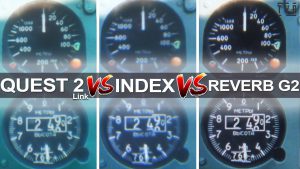
What I decided to buy was the new HP Reverb G2 based on its incredibly high resolution displays: 2160 x 2160 for each eye. The result is that you can’t see the pixels or any sort of “looking through a screen door” effect and the image quality is much improved over older headsets, particularly in the center portion of your view.
That’s a challenge with all VR headsets though: the need for lenses to project the image so that your eyes are focusing on an image a meter or two away rather than the actual physical display that’s only a couple of centimeters away. This lens introduces chromatic distortions that make the outer areas much less clear than the center portion. In addition, to leave room for eyeglass wearers, the lenses and displays need to be mounted a little bit away and this in turn limits the apparent field of view. You end up feeling like you’re looking through ski goggles or some very wide binoculars. Different headsets will make different trade-offs in lens quality and field-of-view versus expense. HP here has managed to get some very high resolution displays with decent lenses into a fairly inexpensive full kit.
The audio on this headset is great too, borrowing the speaker design from Valve’s more expensive Index headset: the speakers sit completely off of your ears, unlike headphones, adding to the overall comfort.
The Reverb’s controllers are a bit of a compromise though: in order to eliminate the need for externally mounted tracking modules, the Reverb G2 has four outward-facing cameras to track the position of the controllers. It works okay, but it definitely has blind spots and can’t always tell where the controllers are. Plus these Windows Mixed Reality-style controllers aren’t able to track individual finger positions like the Valve Index controllers. Even better, the Index controllers strap around your palm, leaving you free to make grasping motions without having to hold on to the controllers.
I’m using the HP Reverb G2 with my 2019 16″ MacBook Pro and an external GPU case, first for a 5700 XT but now a 6800 XT, one of the latest high-powered graphics cards. To use the Reverb, I have to boot into Windows (via Boot Camp, doesn’t work under Parallels) but it works well and provides access to all of the many Steam VR-compatible titles as well as Oculus/Rift-exclusive titles via Revive.
Other Hardware: Valve Index headset and controllers
I’ve now had the opportunity to try the older and more expensive Valve Index system. It has a much lower resolution 1440 x 1600 for each eye and it definitely shows in comparison to the Reverb G2. There’s a fairly obvious “screen door” effect where you can see the fine grid of pixels and things just aren’t as clear and crisp. On the other hand, it can display a wider field of view than the Reverb G2, which is nice. It was also interesting to discover that the Reverb G2 is more comfortable to wear than the older Valve Index. It’s lighter and more secure on your head without being tight and it doesn’t cramp your nose. One thing I prefer on the Valve Index though is the ability to adjust the field-of-view by turning a dial to move the lenses closer or farther away.
The Valve Index depends on a set of external base stations to track the controllers and help track the headset – which certainly isn’t as convenient as systems that do “inside out” tracking from the headset itself. In addition, I wasn’t aware that the base stations emit a constant high frequency whine. Initially this was very bothersome but this seems to have improved with a firmware update and isn’t noticeable anymore.
It’s actually possible to hack together a system for using the Valve Index controllers with other headsets (like my Reverb G2). This can give you better hand tracking and full finger tracking but it’s pretty fiddly and requires a lot of setup – plus I’ve found that the training and calibration that allows this hack to work can get messed up and require reconfiguring things all over again. At times I’ve gotten frustrated with trying to make it work and just gone back to the original Reverb G2 controllers, no hacks or calibration required.
Animating Old Photos
I just tried out this new deep learning tech, Deep Nostalgia, on a couple of old photos of our parents. You give it an old still photo and it generates a “Live Photo” animation from it – pretty freaky:
Two Giants Meet in the Sky
Jupiter and Saturn meet in the sky… it’s a conjunction! Their closest appearance will be right after sunset today, December 21st, 2020. Here’s the view 10 days ago on December 10th and they’re about the moon’s width apart:

Clouds obscured the view off and on Monday evening (Dec. 21st), but it was still visible at times:
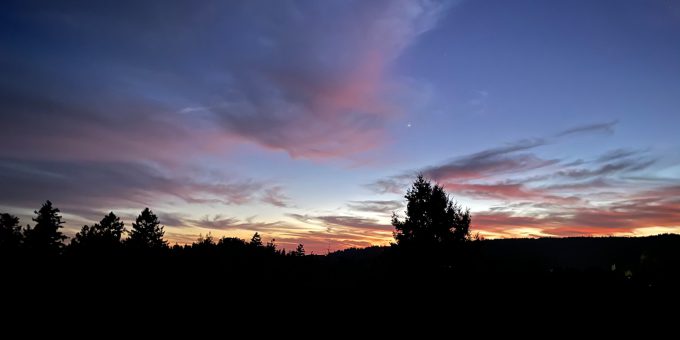
Here’s the view through an 8″ Schimdt-Cassegrain type telescope on the 20th:

I combined three different levels of exposure above to mimic what you see with your eye through the telescope because a single camera exposure just blows out Jupiter and Saturn to make the moons visible. (Note the view is also inverted left to right in a Schimdt-Cassegrain telescope due to the final angled mirror in the light path.)
Here’s video of all three nights through the telescope:

Flying All Over the Planet
I’ve been enjoying the new Microsoft Flight Simulator 2020 which features the ability to fly anywhere in the world with often amazing displays of detail and realism, including live weather effects. If you haven’t seen it yet, here’s several written reviews (IGN, Polygon, Gamerant) and a few showcase videos:
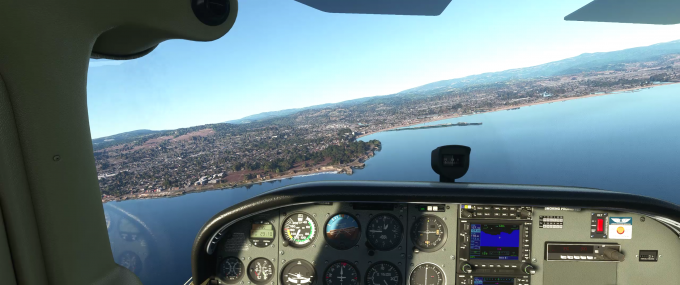
(notice all the detail in the cockpit: sunlight, reflections in the windshield, etc.)
I’m running MS Flight Simulator on my 16″ 2019 MacBook Pro, an ultrawide LG monitor (3440 x 1440) and a Logitech G Pro Flight Yoke system with rudder pedals. (A yoke is much easier to fly with than the keyboard controls.) It’s a pretty immersive experience:
(For all of these YouTube videos, you’ll want to go full screen
and force the highest resolution, not just leave it on “auto”.)
Be aware that right now, as with all the newest graphic cards, every flight yoke and joystick is pretty difficult to find anywhere at normal retail prices ($165-ish) as the release of this game (and the pandemic) have driven them out-of-stock everywhere.
Even with the whole world available to explore, it’s particularly fun to fly around places that you know very well from the ground. I’ve created a couple of longer videos of such flights – here’s a tour of the Santa Cruz area, including the boardwalk, downtown, Scotts Valley, Felton and north along the coast as far as Año Nuevo:
Some locations (like Santa Cruz above) benefit from detailed photogrammetry data providing lots of realistic detail. Other locations get carefully handcrafted buildings and objects (particularly at select airports), while the rest of the planet gets more generic textures and topographical information from satellite data and auto-generated details like trees and buildings. For example, the generic buildings populating the ghost town of Bodie are very out of place in my little tour of the Eastern Sierra – from Bishop to Mammoth and on to Mono Lake and Bodie:
Lots of folks are already making add-ons that you can drop in to enhance the rendering of a particular location or add a particular plane. Here’s one great index of available add-ons for MS Flight Simulator.
The 16″ MacBook Pro (2.4GHz 8‑core Intel Core i9) can actually manage to run MS Flight Simulator on my ultrawide monitor with just the laptop’s built-in AMD Radeon Pro 5500M GPU but at lower Medium level settings. This game can be very CPU and even network intensive (the world does not fit on your hard drive) so the game can bog down even if your GPU has cycles to spare.
For higher quality settings, I’m using a Red Devil Radeon 5700 XT graphics card in an external GPU enclosure (connected via Thunderbolt) running MSFS 2020 on Windows 10 via Apple Boot Camp. This setup allows for something between High-End and Ultra settings at 3440 x 1440 resolution.
Update (Jan 2021): I’m since been able to get one of the new, next generation GPU’s: an overclocked Radeon 6800 XT and I’m now able to run smoothly at even greater than “Ultra” settings from my 2019 MacBook Pro. It looks fantastic!
Note that you’ll likely need to go through a bit of hassle to successfully configure these AMD graphics cards under Boot Camp. See the egpu.io forums and bootcampdrivers.com for help. The Nvidia cards don’t require workarounds for Boot Camp but they’re not supported at all on macOS, whereas the AMD cards work under macOS without doing anything.
And now in virtual reality: I’ve also picked up a very high resolution HP Reverb G2 VR headset which makes for a truly amazing and engrossing experience. With a proper VR headset, you get that incredible, brain-fooling trick of virtual reality immersion – of seeing and hearing only the virtual world around you, no matter which way you look. With the Reverb’s incredibly high 4320 x 2160 resolution, I can’t run at the highest graphics settings (even with that new GPU) but it doesn’t matter – that feeling of immersion is so captivating – feeling like you’re actually sitting in the cockpit. You’ve got to directly experience it though to believe it. Watching a video recording shown on a fixed screen in front of you can never convey it. I’ve written more about experiencing virtual reality here.
Gaming Continues

Despite the upheaval that is 2020, the gaming continues with Near and Far, Elfenland/Elfenroads, Ecos: The First Continent, Cryptid, Galaxy Trucker, Streetcar, Memoir’44, Covert, Now Boarding, Great Western Trail, and a few Clank! expansions: Sunken Treasures, Temple of the Ape Lords, and The Mummy’s Curse. Then there’s our new favorite trick-taking game, The Crew: The Quest for Planet Nine.
We also played a number of titles from the Exit: The Game series, but I don’t recommend them – they’re often a rather mixed bag and sometimes annoying in their puzzle designs.





